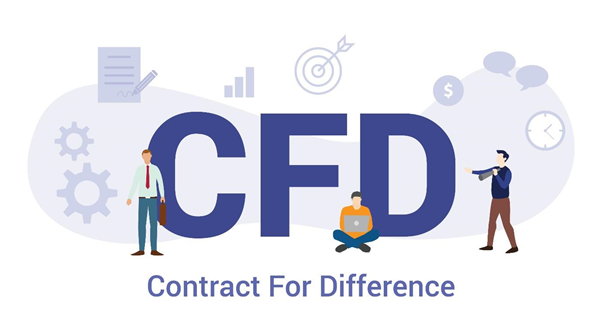Contracts for Difference, known as CFDs, are one of the ways an investor can gain access to the stocks and shares market, and has become increasingly popular over the years. As CFD brokers commonly offer leverage when trading stock CFDs, this type of trading gives investors greater exposure to the stock market, with less capital. Usually used in day trading, it also means investors can trade on falling prices, or hedge their losses against a bearish market when owning the underlying asset. One good example of a broker that offers CFD is eToro (here’s a real good Wikitoro broker online resource in case you want to find more info about this particular brand). Here we explain more about what exactly CFDs are, and how you can they be used in stock trading.
What are CFDs?
Contracts for difference (CFDs) are financial derivatives, where an agreement takes place between an investor and a broker on the value of an asset, between opening and closing the contract. Unlike traditional financial markets, there is no delivery of physical goods or securities, as the underlying asset is not owned by the investor.
This type of trading allows investors to speculate on the price movement of an asset, for example shares in a company, and open and close the contract accordingly. They can open a buy position or a sell position, depending on the predicted movement of the stock price. This allows for the potential profit on both rising and falling markets.
When trading in stock CFDs, you do not have ownership of the shares – meaning you do not have benefits such as voting rights or dividends from the companies in which the shares are invested in. However, CFDs give traders the ability to use leverage to speculate on the movement of the stock market, without needing to use large sums of money as an initial deposit. This leverage is usually higher than that of traditional trading, and with less capital outlay and greater potential for higher returns. For example, a leverage ratio of 1:5 allows you to start trading with £100, but gain the effect of a value of £500. Leverage amplifies any profits, but this also applies to your losses too.
How to trade shares with CFDs?
First of all, you should choose the trading platform in which to conduct the trade of CFDs. It is vital that you go through a reputable and regulated provider, to ensure that all prices and transactions are transparent, and that you have full client protection.
Once you have created an account and deposited your initial capitol, you can then choose which shares you will speculate the rise and fall of price. There will be a variety available in terms of which market to choose, such as the USA, UK or Germany, as well as popular individual assets such as share CFDs in Facebook and Apple.
From there, you can open as many CFD contracts as you would like, known as units. One unit equates to a contract in the difference of price of one share value. With leveraged trading included, make sure you have enough money in your deposit to open this number of CFDs and maintain your position.
If you think the stock price will rise, then you would open a buy position. Likewise, if you think the market will fall, then you would open a sell position. Through the online trading platform, you can choose to predefine stops and limits automatically, at a predetermined price, to limit your losses and lock in profits.
Once a CFD is closed, the profit or loss is determined by the difference in the price of the underlying asset from opening the contract, and any profit or loss will be shown in your account balance. From this same account, you can choose to trade CFDs in various underlying shares.
Remember to always consult the trading platform in which you are opening the CFD, as they will have plenty of information and guides available to access. For example, if you wish to know how to trade stocks in the UK on Plus500, their website offers live market data and detailed answers to frequently asked questions, all in one place.
—
CFD stock trading has its advantages and disadvantages, just like regular trading on the stock market, and is more suited to experienced traders. Remember to choose your investments wisely, and make your decisions based on your trading style, objectives and strategies.


